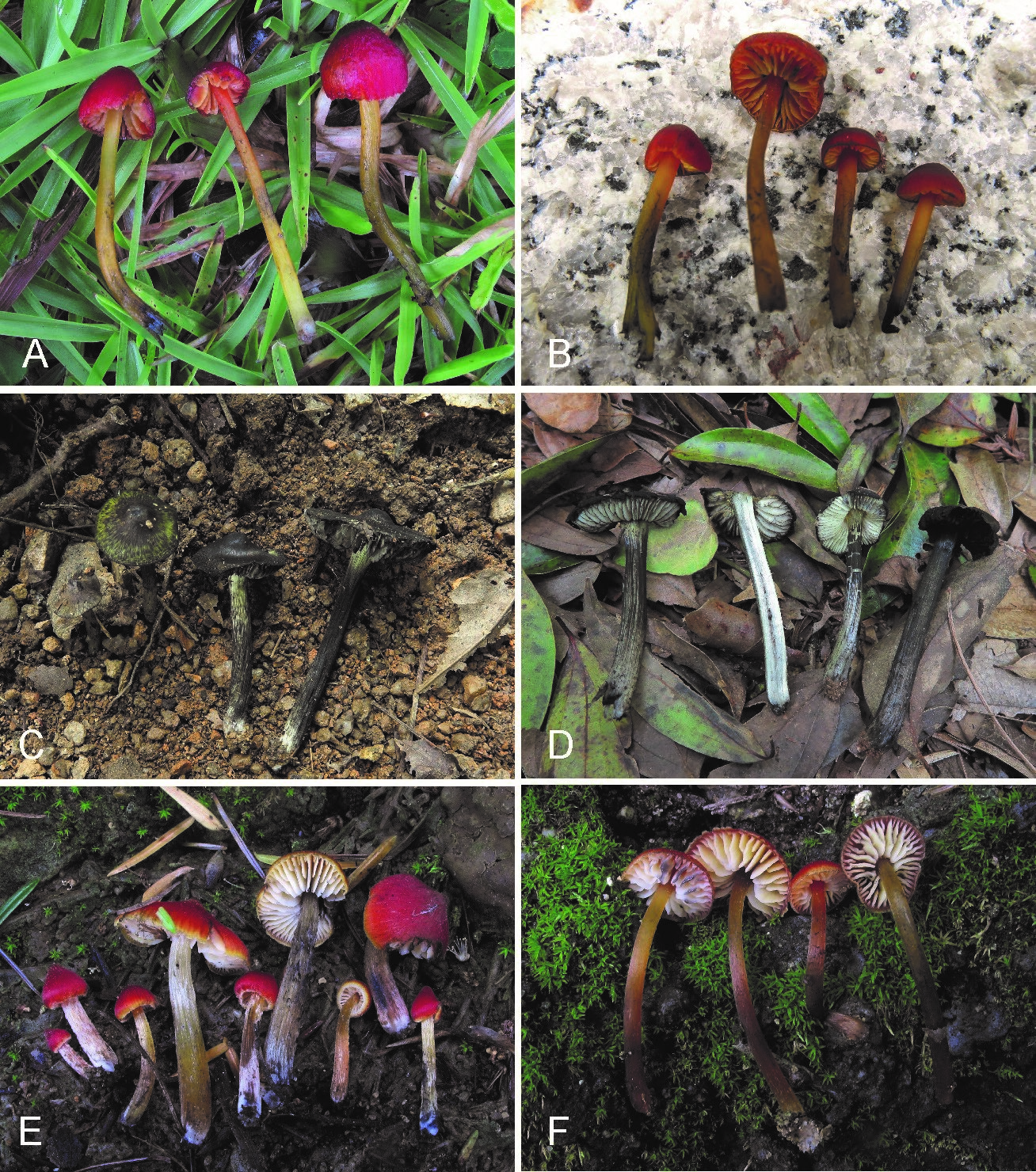 183
183
Hygrocybe rubroconica C.Q. Wang & T.H. Li, sp. nov. 2020
MycoBank No:837541
Holotype: China. Guangdong Province, Shaoguan City, Ruyang County, Nanling Natural Reserve, elev. ca 1180 m, 15 May 2015, Ming Zhang, Hao Huang and Jiang Xu (GDGM45213, Holotype!).
Morphological description
Pileus 5–25 mm broad, conical, conical when young, broadly conical, hemisphere to plano-convex when mature, sometimes with an umbo in center, red to vivid red (10A7–8, 10B7–8), usually darker at disc, translucently striate from the margin to about a half of radius, blackening when bruised or mature; margin incurved, white to light yellow to reddish yellow (4A5–6). Lamellae free, ventricose to broadly ventricose, white to yellowish white, blackening when bruised or mature, up to 4 mm broad, distinct, waxy, fragile, with 1–3 lamellula between two entire lamellae. Stipe 20–40 mm long, 1–4 mm thick, central, cylindrical, slightly enlarged towards the base, hollow, simitranslucent, pale yellow (4A3) to brownish orange (5C3–5), nigrescent when bruised or old, usually covered with white longitudinal fine fibrils when young.
Basidiospores (7.5)8–10.5(11) × (6.5)7–8.5 μm [mean length = 9 μm, mean width = 7.6 μm], Q = 1–1.47, Qm = 1.2, globose, subglobose, broadly ellipsoid to ellipsoid, smooth, thin-walled. Basidia 25.5–45 × 8.5–12 μm, mainly 2-spored, rarely 4-spored, clavate, containing some black endochrome in KOH, with sterigmata up to 10.5 μm long. Pseudocystidia present. Pileipellis as a cutis, comprised of parallel hyphae 4–10 μm wide, occasionally with bend hyphae, with some black inclusions. Stipipellis made up of parallel hyphae, occasionally with some thick-walled haphae. Hymenophoral trama regular, of hyaline and thin-walled hyphae 8.5–17 μm wide, sometimes containing blackish brown materials.
Habitat: on moist soil in forests
Distribution: Southern China.
GenBank Accession: ITS MW001786; LSU MW007881
Notes: Hygrocye rubroconica is characterized by the red pileus, ventricose to broadly ventricose lamellae, nearly translucent stipe covered with white fibrils at first, globose to ellipsoid basidiospores, mainly 2-spored basidia, and the presence of pseudocystidia.
Hygrocybe veselskyi Singer & Kuthan, originally described from Czechoslovakia, resembles H. rubroconica in its general appearance due to the red pileus and black staining reaction when touched or mature; however, H. veselskyi differs from H. rubroconica since it has yellow lamellae and bigger basidiospores measuring 10–12.5 × 5.3–6 μm (Candusso 1997).
Reference: Wang C-Q, Zhang M, Li T-H (2020) Three new species from Guangdong Province of China, and a molecular assessment of Hygrocybe subsection Hygrocybe.
Basidiomes of Hygrocybe species E Hygrocybe rubroconica (GDGM45213) F Hygrocybe rubroconica (GDGM45214).

